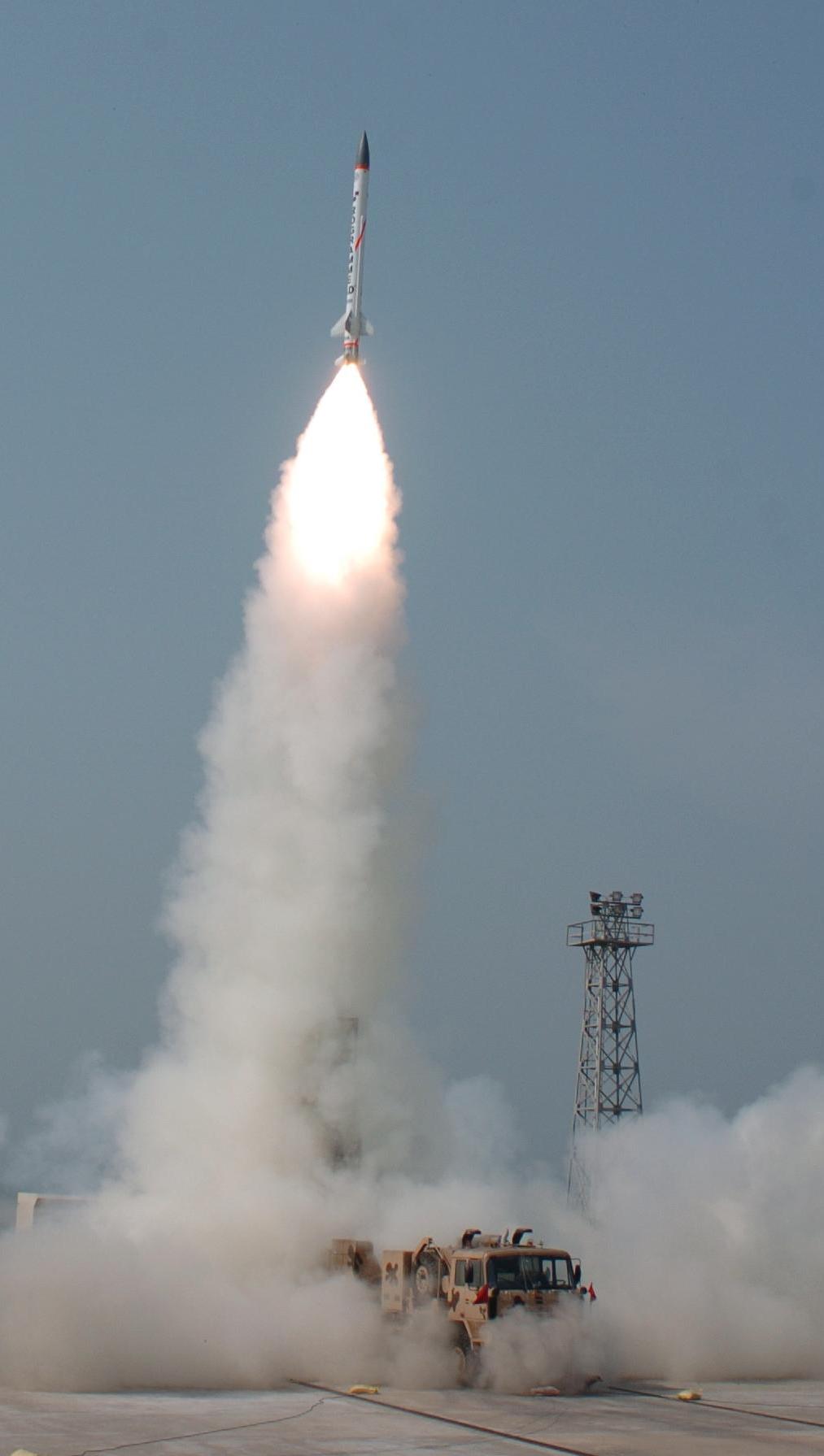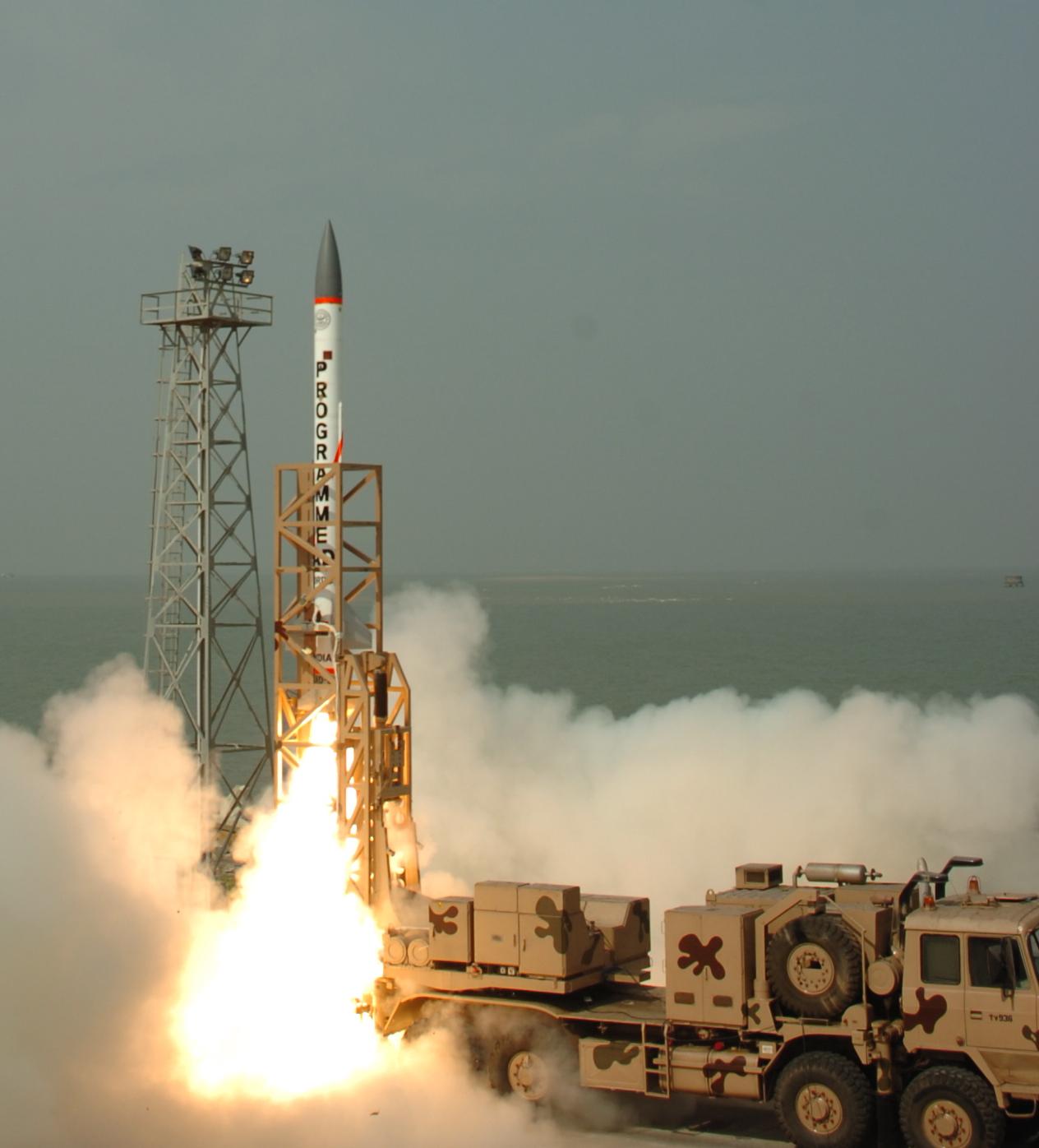- Joined
- Jul 31, 2009
- Messages
- 2,116
- Likes
- 793
In the age of AWAC a missile can be detected even in its boost phase specially for a country with less geographic depth. But intercepting it in different phases has different advantages and disadvantages. Hope wiki can help a bit-
....Ballistic missiles can be intercepted in three regions of their trajectory: boost phase, midcourse phase or terminal phase.
Boost phase: intercepting the missile while its rocket motors are firing, usually over the launch territory. Advantages: bright, hot rocket exhaust makes detection, discrimination and targeting easier. Decoys cannot be used during boost phase. Disadvantages: difficult to geographically position interceptors to intercept missiles in boost phase (not always possible without flying over hostile territory), short time for intercept (typically about 180 seconds). Example: aircraft-mounted laser weapon Boeing YAL-1 (under development).
Mid-course phase: intercepting the missile in space after the rocket burns out. The coast period through space before reentering the atmosphere can be several minutes, up to 20 minutes for an ICBM. Advantages: extended decision/intercept time, very large geographic defensive coverage, potentially continental. Disadvantages: requires large/heavy anti-ballistic missiles, sophisticated powerful radar often augmented by space-based sensors, must handle potential space-based decoys.
Terminal phase: intercepting the missile after it reenters the atmosphere. Advantages: smaller/lighter anti-ballistic missile required, balloon decoys won't work, smaller, less sophisticated radar required. Disadvantages: very short reaction time, possibly less than 30 seconds, less defended geographic coverage. Possible blanketing of target area with hazardous materials in the case of detonation of nuclear warhead(s). .....
If we candevelop laser based interceptor it will possibly have better success rate than projectile based inteceptor as laser wont take any time to travel the distance to destroy the enemy missile at its boost phase of course you must have such radar to facilitate that.
....Ballistic missiles can be intercepted in three regions of their trajectory: boost phase, midcourse phase or terminal phase.
Boost phase: intercepting the missile while its rocket motors are firing, usually over the launch territory. Advantages: bright, hot rocket exhaust makes detection, discrimination and targeting easier. Decoys cannot be used during boost phase. Disadvantages: difficult to geographically position interceptors to intercept missiles in boost phase (not always possible without flying over hostile territory), short time for intercept (typically about 180 seconds). Example: aircraft-mounted laser weapon Boeing YAL-1 (under development).
Mid-course phase: intercepting the missile in space after the rocket burns out. The coast period through space before reentering the atmosphere can be several minutes, up to 20 minutes for an ICBM. Advantages: extended decision/intercept time, very large geographic defensive coverage, potentially continental. Disadvantages: requires large/heavy anti-ballistic missiles, sophisticated powerful radar often augmented by space-based sensors, must handle potential space-based decoys.
Terminal phase: intercepting the missile after it reenters the atmosphere. Advantages: smaller/lighter anti-ballistic missile required, balloon decoys won't work, smaller, less sophisticated radar required. Disadvantages: very short reaction time, possibly less than 30 seconds, less defended geographic coverage. Possible blanketing of target area with hazardous materials in the case of detonation of nuclear warhead(s). .....
If we candevelop laser based interceptor it will possibly have better success rate than projectile based inteceptor as laser wont take any time to travel the distance to destroy the enemy missile at its boost phase of course you must have such radar to facilitate that.
Last edited:




